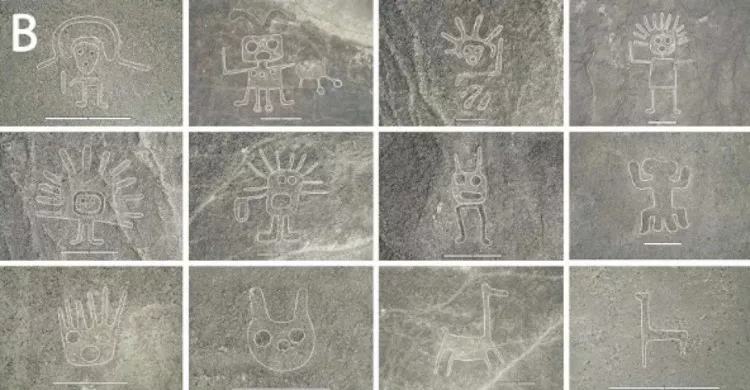Analysis of aerial photographs of the Nazca plateau, conducted using artificial intelligence, has led to the discovery of 303 new, previously unknown geoglyphs. The research project, led by archaeologist Masato Sakai of Yamagata University in Japan, used AI algorithms to analyze high-resolution images taken by drones. Ultimately, 1,309 potential geoglyphs were identified, 303 of which were confirmed during field surveys.
The Nazca Plateau, located in southwestern Peru, extends over an area of about 440 square kilometers. It is known worldwide as the site of hundreds of geoglyphs. Located in the desert between the cities of Nazca and Palpa, the drawings, such as huge geometric figures, the likenesses of monkeys, fish, spiders and other animals up to hundreds of meters long, are visible only from overhead. Some scientists speculate that the large lines on the ground may have aided travel or had astronomical significance. Another group of researchers believe that the lines depicted layouts of trade routes or were works of art made for deities in the heavens.
The new glyphs were discovered in a 440 square kilometers area of Sechura Desert in Peru. These ancient works of art were probably created between 200 BC and 500 AD by members of the pre-Inca civilization known as Nazca, who removed the upper layers of stones from the desert, exposing fragments of lighter soil. In doing so, they formed various shapes, creating images of people or animals. Some of the new discoveries include drawings depicting humanoid figures, heads, various kinds of domestic animals, especially llamas. There are also drawings of wild animals, birds, cats or monkeys. Depictions of probable “ceremonial scenes” and human-animal interactions have also been discovered. The most bizarre geoglyph is a 22-meter-long drawing depicting a fish, most likely a cetacean, armed with a knife.
Artificial intelligence played a key role in this groundbreaking discovery. It enabled faster and more precise identification of geoglyphs in only six months, doubling the number of known monumental drawings in the region. AI algorithms created by Japanese researchers were able to detect even previously unobservable shapes. Lately, the discovery of new geoglyphs began to slow down, as the remaining yet undiscovered geoglyphs were likely affected by erosion. But artificial intelligence is doing an excellent job of dealing with this issue. Over the next few years, scientists plan to further explore the sites pinpointed by the algorithms, which could lead to the discovery of more fascinating earth drawings.


Source: New Scientist, Science, Live Science, photo by Sakai et al., PNAS, 2024
Photo by Sakai et al., PNAS, 2024








